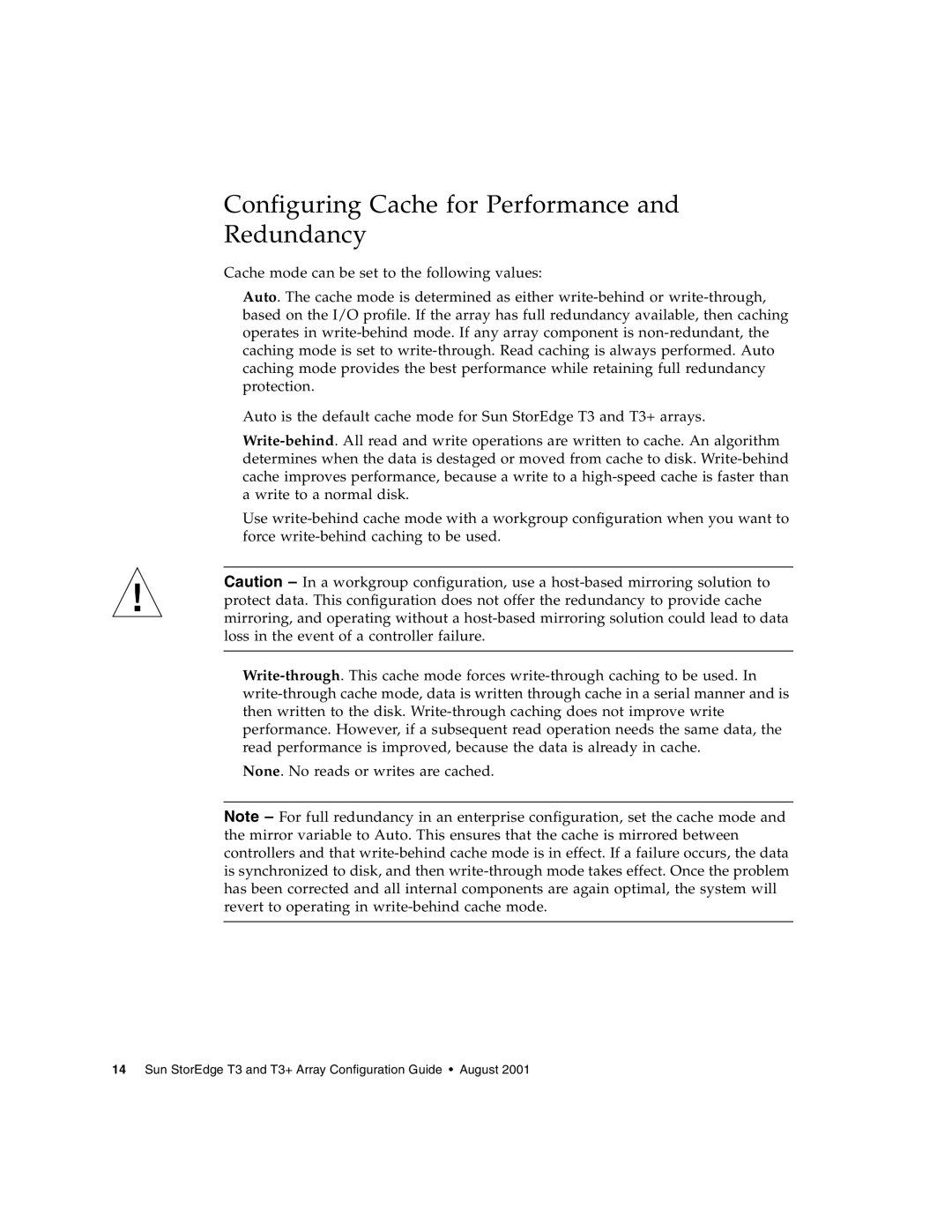T3 specifications
Sun Microsystems T3 is a high-performance scalable server designed to meet the demanding requirements of enterprise-level computing. Introduced as part of the Sun Fire server lineup, the T3 was built to cater to organizations that needed both flexibility and reliability in their IT infrastructure.One of the key features of the Sun T3 is its SPARC T3 processor, which integrates several cores on a single chip. This processor architecture allows for simultaneous multithreading, maximizing the utilization of resources and enhancing throughput. The SPARC T3 can support up to 16 cores, which means that it can handle a significant number of threads at once, making it an excellent choice for web applications, database processing, and other high-demand environments.
The T3's memory architecture also stands out. The system can support up to 1TB of memory with up to 128 DIMM slots, allowing for large data sets to be processed with ease. This large memory capacity provides ample room for memory-intensive applications and ensures smooth performance even under heavy loads.
Moreover, the Sun T3 is equipped with a unique virtualization technology known as Oracle VM Server for SPARC. This allows businesses to run multiple operating systems and applications on the same physical machine, reducing the need for additional hardware and simplifying management tasks. The virtualization capabilities contribute to cost savings while improving resource utilization.
In addition, the T3 features advanced I/O capabilities with multiple connectivity options, including Ethernet, Fibre Channel, and Serial Attached SCSI (SAS). This flexibility ensures that the system can be integrated into various network environments and supports a wide range of storage solutions.
Furthermore, the T3 is designed for enhanced energy efficiency. Sun Microsystems embedded their CoolThreads technology, which significantly reduces power consumption compared to traditional server architectures. This focus on energy efficiency not only helps in reducing operational costs but also supports corporate sustainability initiatives.
The T3 also incorporates robust security features, including hardware-based security mechanisms that protect data and facilitate secure operations. This is particularly important for businesses that handle sensitive information and are subject to regulatory compliance.
In summary, Sun Microsystems T3 is a formidable server that combines advanced processing power, scalability, virtualization capabilities, and energy efficiency. Its architecture and design make it suitable for a wide array of enterprise applications, positioning it as a reliable foundation for businesses looking to enhance their IT infrastructure.

